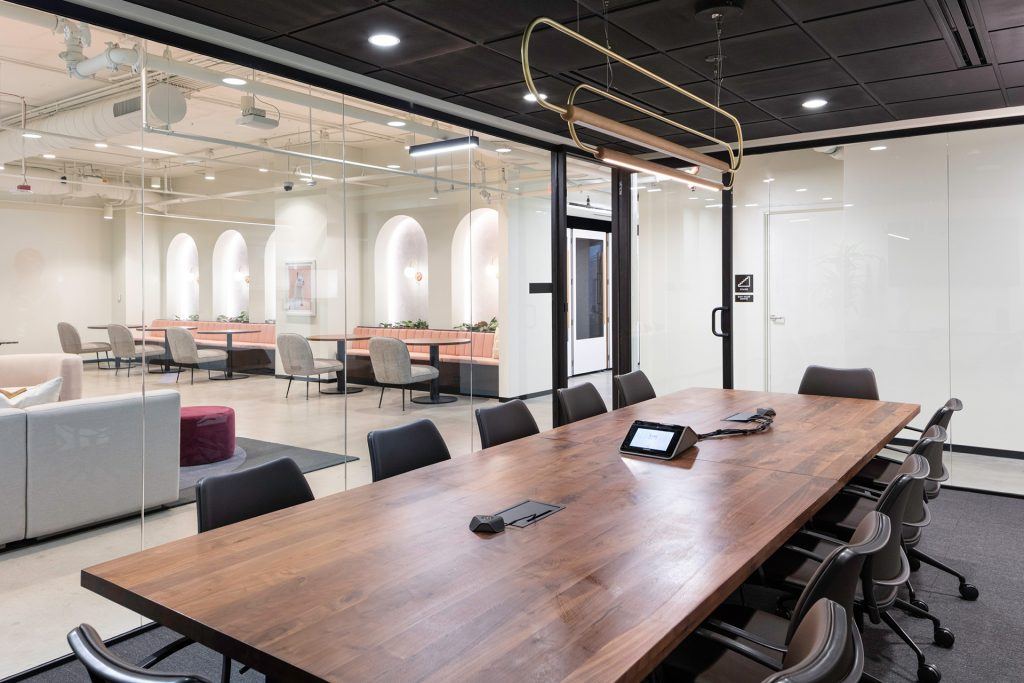It’s no secret that a lot of things have changed over the last few years, especially when it comes to the office.
From the rise of remote work to changing perceptions about work-life balance, it’s obvious that the workplace of the future might look a little different from what most of us had planned. While many of these changes have been good, they also present a unique set of challenges, especially with regards to attracting and retaining talent. In today’s competitive hiring market, meeting—and surpassing—employee expectations is key, and this employee-centric focus will continue to be a main factor in how organizations will adapt and thrive in 2022.
So what are employees looking for in the next year? With over 87% of Americans eager to return to the office, Industrious surveyed over 500 professionals to find out exactly what they wanted from their workplaces, and the results were clear.

Mental Health Is A Top Priority
The pandemic has taken a massive toll on employees’ mental health. Approximately 57% of U.S. workers report feeling stressed on a daily basis according to Gallup’s State of the Global Workplace Report, an 8% increase from the previous year, and an astounding 4 out of 10 adults have reported symptoms of anxiety or depression during the pandemic.
It comes as no surprise, then, that 81% of those Industrious surveyed found that having a work environment that fosters mental health and wellness is at least “somewhat important” to them. And, for those who valued working in a physical office environment, this emphasis on mental health was even more important.
Plus, this focus on mental health isn’t just a perk—it’s also a key to retaining top talent. According to Mercer’s 2021 Health on Demand Report, 42% of employees with access to mental health benefits say they are more likely to stay at their current organization compared to 27% of those without.

Social Interaction And Collaboration Are More Important Than Ever
While remote work offers many benefits, it also presents a massive challenge: feelings of isolation and loneliness. Even before the pandemic, 62% of U.S. workers were considered lonely, according to the Cigna’s Loneliness and the Workplace Report—many of whom reported feeling less engaged, less productive, and less likely to stay at their jobs.
The focus on connection is more important than ever, but just returning to the office isn’t enough. Workspaces need to reflect the values of employees—especially since three-fourths of employees surveyed consider their physical office space “very or extremely important” to their job satisfaction—and social interaction is a huge part of that with 66% of employees reporting that they miss their work spouse, 41% citing social gatherings as an important part of a healthy workplace, and 54% reporting that social connections at work have become more important to them over the course of the pandemic.
Employees want to engage in workspaces that support these goals, especially for younger generations, with nearly one-third of Gen-Z and Millennial workers stating that they want dedicated spaces at work that encourage socializing—and they’re willing to move on if they don’t get it.

Premium Amenities Are No Longer Optional
While many employees are enthusiastic about returning to the office, that doesn’t mean they’re willing to settle. In fact, 41% of those surveyed reported that they’d ask to continue working remotely if their office space didn’t have the amenities they prefer, and more than a quarter reported they would consider finding another job instead.
So what amenities stand out? A majority of employees expressed interest in their own private workspace versus an open-floor plan or team-based seating. Access to a fully-stocked kitchen is also a high priority, and nearly half of those surveyed expressed interest in a pet-friendly workplace, health and safety protocols designed to keep people safe in the office, as well as the ability to take breaks during the day.
It’s clear that employees want to work in an environment that prioritizes their overall well-being, especially for those who have been working from home for the past two years, and organizations need to deliver.
The Bottom Line
As we move into 2022 and beyond, it’s clear that the focus on employee well-being is paramount. However, it’s not just about attracting and retaining talent—improving mental health in the workplace can also help improve productivity, bolster creativity, reduce burnout, and more.
After two years of working from home, many people are discovering that their physical environment plays a massive role in their work life, which is why it’s critical to create spaces that meet employees’ needs without sacrificing productivity, collaboration, or productivity. Because great work requires great workspaces, and employees are more than willing to share what they want—now it’s up to organizations to listen.